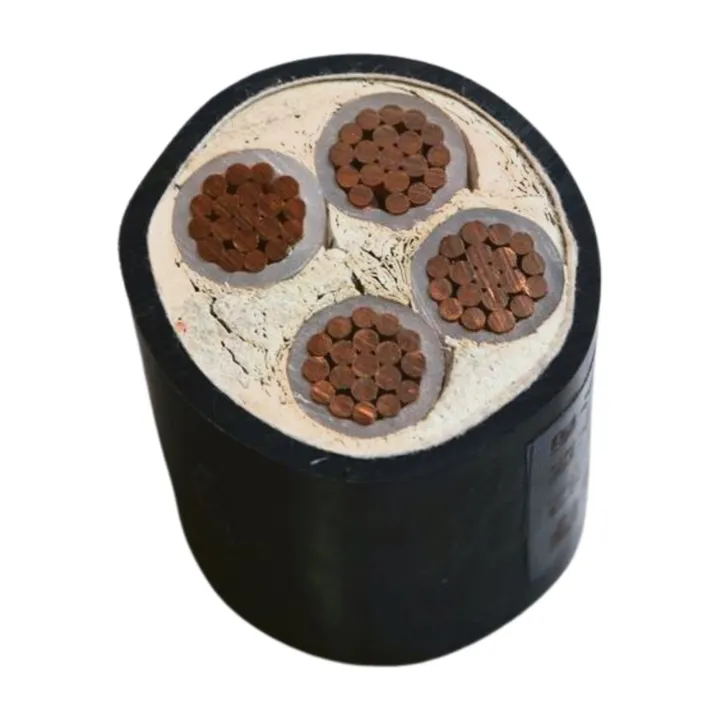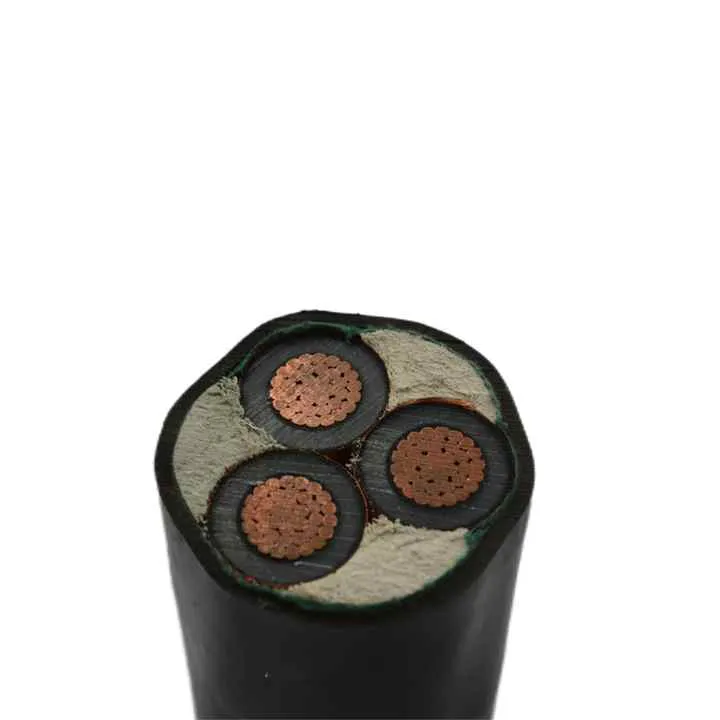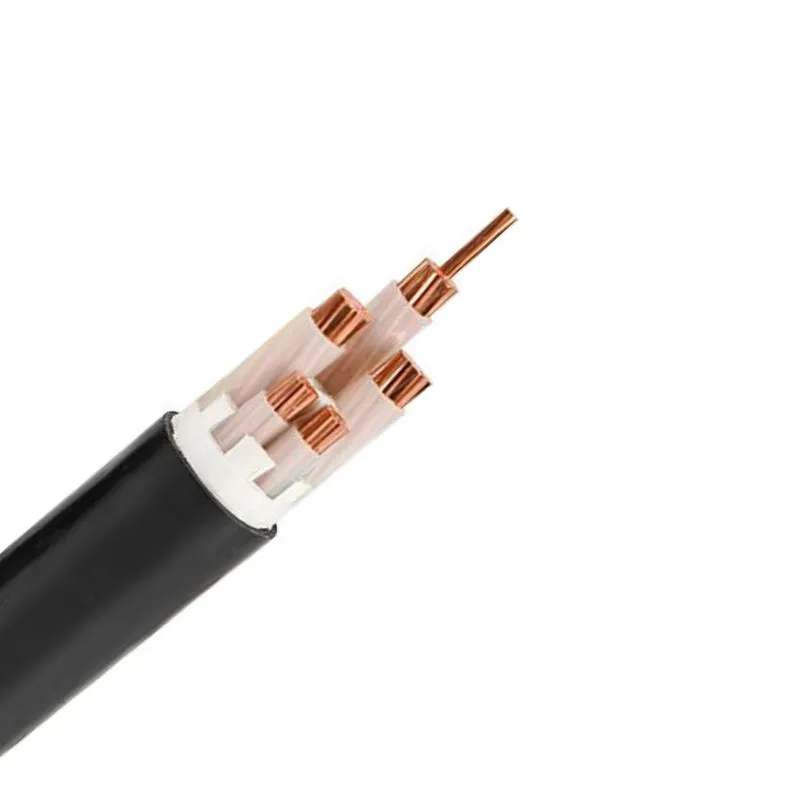How to Select the Right Medium Voltage Cable Size for Your Project
Time: 2025-10-10 03:48:11
Source: Henan Province Jianyun Cable Co., Ltd.
Selecting the appropriate size for medium voltage (MV) power cables—typically rated from 6 kV to 35 kV per IEC 60038—is crucial for ensuring safety, efficiency, and compliance in industrial, utility, and infrastructure projects. Incorrect sizing can lead to overheating, excessive voltage drop, or inadequate short-circuit protection, resulting in system failures or safety hazards. This guide provides a step-by-step approach to MV cable sizing, based on standards like IEC 60502-2 (for cables 6–30 kV with extruded insulation such as XLPE or EPR), presented in a formal, structured manner.

1. Overview of MV Cable Sizing
MV cable sizing involves determining the conductor cross-section (e.g., 25 mm² to 400 mm²) to safely carry the required current while minimizing voltage drop (<1.5% recommended) and withstanding short-circuit currents. Sizing is governed by standards like IEC 60502-2, which specifies construction, insulation thickness (e.g., 3.4 mm for 6/10 kV), and testing requirements (e.g., partial discharge <10 pC). Proper sizing ensures a cable lifespan of 25–30 years, with materials like copper or aluminum conductors and XLPE insulation. Jianyun Cable offers TUV- and CCC-certified MV cables, compliant with IEC 60502-2, for reliable sizing in diverse projects.
2. Key Factors in MV Cable Sizing
Several factors influence cable size selection:
-
Load Current (I): The maximum continuous current the cable must carry, calculated as I = P / (√3 × V × cosφ), where P is power (kW), V is voltage (kV), and cosφ is power factor (typically 0.8–0.9).
-
Voltage Drop (VD): Limit to <1.5% to maintain system efficiency; formula: VD (%) = (√3 × I × L × R) / V × 100, where L is length (km), R is resistance (Ω/km), V is voltage (kV).
-
Short-Circuit Current: Ensure cable withstands fault currents (e.g., 20 kA for 1 second) without exceeding temperature limits (250°C for XLPE).
-
Derating Factors: Adjust ampacity for ambient temperature (>30°C), installation method (underground, air), and grouping (e.g., 0.91 derating at 40°C per IEC 60364).
-
Environmental Conditions: Account for soil thermal resistivity (<1.2 K·m/W for underground) or UV exposure.
-
Conductor Material: Copper has lower resistance (<0.017 Ω/km for 50 mm²) than aluminum (<0.028 Ω/km), allowing smaller sizes.
3. Step-by-Step Guide to Sizing MV Cables
Follow these steps to select the right MV cable size:
-
Determine Load Requirements:
-
Calculate maximum current (I) based on power demand (e.g., 200 A for a 11 kV system with 3 MW load, cosφ=0.85).
-
Identify voltage rating (e.g., 12/20 kV for substations).
-
Select Conductor Material:
-
Use copper for high-conductivity, compact installations; aluminum for cost-sensitive, lightweight needs (e.g., aluminum requires ~1.6x larger cross-section for equivalent capacity).
-
Calculate Minimum Cross-Section for Current Capacity:
-
Refer to IEC 60364 or manufacturer ampacity tables (e.g., 50 mm² copper XLPE carries ~200 A at 90°C in air).
-
Apply derating (e.g., 0.85 for underground at 40°C soil temperature).
-
Check Voltage Drop:
-
Use formula: VD (%) = (√3 × I × L × R) / V × 100; ensure <1.5%.
-
Example: For 200 A over 1 km at 11 kV with 50 mm² copper (R=0.017 Ω/km), VD ≈ 1.2% (acceptable). Increase to 70 mm² if >1.5%.
-
Verify Short-Circuit Rating:
-
Calculate short-circuit current (I_sc) and ensure cable withstands it (e.g., k-factor per IEC 60909: 143 for copper, 94 for aluminum).
-
Account for Installation Method:
-
Underground: Use SWA-armored cables; derate for soil (e.g., 0.85).
-
Overhead: Use aerial bundle cables (ABC); no derating needed for air cooling.
-
Select Insulation and Sheathing:
-
XLPE for high temperatures (90°C); LSZH for fire safety.
-
Consult Supplier:
-
Partner with manufacturers like Jianyun Cable for customized MV cables (e.g., 12/20 kV XLPE-insulated, 50 mm² copper).
-
Cable Sizing Software: Use tools like ETAP or CYMCAP for detailed calculations, incorporating derating and short-circuit analysis.
-
Manufacturer Calculators: Jianyun Cable provides online sizing tools based on IEC 60364 for voltage drop and ampacity.
-
Standards References: IEC 60364 (installation methods), IEC 60909 (short-circuit currents), and IEC 60502-2 (cable specs).
-
Third-Party Verification: Engage consultants for complex projects to ensure compliance.
5. Practical Considerations
-
Project Scale: Use copper for high-current, compact installations (e.g., data centers); aluminum for cost-effective long runs.
-
Environmental Factors: Apply additional derating for high ambient temperatures (e.g., 0.91 at 40°C) or soil conditions.
-
Safety: Ensure cables meet flame-retardant standards (IEC 60332-3) and include proper shielding to prevent partial discharge.
-
Supplier Support: Jianyun Cable offers TUV-certified MV cables with batch-specific test reports, ensuring accurate sizing and compliance.
-
Cost vs. Performance: Balance initial costs (aluminum lower) with lifecycle efficiency (copper better conductivity).
6. Challenges and Solutions
|
Challenge
|
Solution
|
|
Incorrect Sizing
|
Use IEC 60364 charts and software to calculate load and voltage drop.
|
|
Derating Errors
|
Apply factors for temperature (e.g., 0.91 at 40°C), installation method (e.g., 0.85 underground).
|
|
Short-Circuit Risks
|
Verify k-factor (143 for copper) and use protective devices like fuses.
|
|
Counterfeit Cables
|
Source from Jianyun Cable with TUV/CCC certifications; verify via databases.
|
|
Environmental Variations
|
Select XLPE insulation for high temperatures; LSZH for fire safety.
|
7. Conclusion
Selecting the right medium voltage cable size requires a systematic approach, considering load current, voltage drop, short-circuit capacity, derating factors, and standards like IEC 60502-2. Proper sizing ensures safe, efficient power distribution with a lifespan of 25–30 years. Henan Province Jianyun Cable Co., Ltd. offers TUV- and CCC-certified MV cables, providing reliable solutions for industrial and utility projects. By following these steps and consulting resources like IEC standards or manufacturer tools, users can achieve optimal cable performance and compliance. For complex projects, engage experts to verify calculations and ensure long-term reliability.




